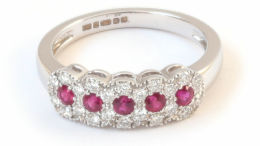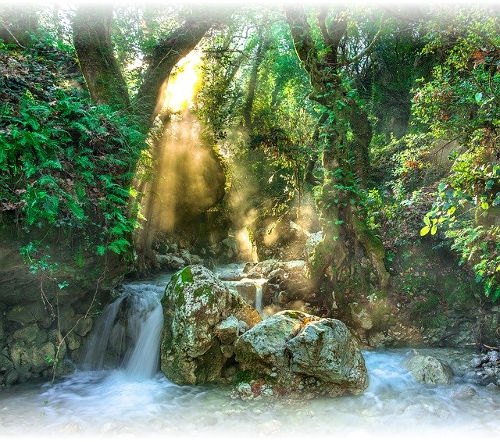
This metal is commonly used in a few areas such as jewellery, electronics or even cars. Sometimes it is for its visual properties, sometimes for physical properties. For example, it can be used as a thermal insulator in high performance cars to quickly dissipate heat in critical areas. In jewellery, of course, its mostly about the vibrant looks.
Properties
Gold by itself is a rather soft metal, so pure gold jewellery is not the most common application of it. Usually, it is alloyed with other metals to increase its hardness so that its easier to work with. Depending on the metal used in the alloy, gold can take on many colours - yellow gold may be the most common, but white and rose gold can be seen quite often as well. There are many other gold colours, but not all of them are as easy to work with in jewellery.
It's worth mentioning that in the US, white gold alloys may contain nickel. This is often not allowed in Europe - due to the prevalence of nickel allergies, quite a few European countries prohibit the use of nickel in jewellery. As such, European jewellery is usually nickel free.
Fineness
Fineness, or quality of gold, is measured in carats. This scale can reach a maximum of 24 carats, at which point the gold is considered to be 99% pure or more.
Gold can be hallmarked, which usually acts as a guarantee that the jewellery is made of a certain standard of gold - for example a hallmarked 9 carat gold pendant is at the very least 37.5% gold. Why 9 carat? This is the minimum standard in the UK for gold jewellery, as well as for hallmarking.
Value
Though it may not be quite as sought after as it used to be in the past, gold remains a precious metal. This means that an investment in gold jewellery can be reasonably safe - even if the jewellery were to be damaged, it would still have scrap metal value.
With this information, you can now make a more informed choice on which gold standard to go for. Our selection of gold jewellery is all hallmarked, so you can safely browse our website - genuine gold only!
Some Fun Facts
Before you go, how about some fun facts about gold?
- Enduring Symbol: Gold has been a symbol of wealth and luxury for centuries. Its timeless allure has made it a sought-after precious metal in various civilizations, from ancient Egypt to modern times.
- Chemical Symbol Au: The chemical symbol for gold – "Au" – comes from the Latin word "aurum" which means "shining dawn". Gold is one of the few elements that exists in its elemental form in nature, that is it does not form minerals easily.
- Malleability and Ductility: Gold is incredibly malleable and ductile. A single gram of gold can be hammered into a thin sheet that covers a square meter, or drawn into a thread over two kilometers long without breaking.
- Invisible Gold: Ocean water contains about 10 parts per trillion of gold. While this might not seem like much, it adds up to around 20 million tons of gold dissolved in the world's oceans! However, it is currently not economically feasible to extract gold from seawater (although they did try in Hitler-Germany).
- Ancient Cosmetic Use: Cleopatra was rumored to have slept in a gold mask every night to enhance her skin's radiance. Gold has been used in various cultures for cosmetic purposes, believing it could improve the skin and overall health. But we are not recommending that...
- Space Gold: Astronomers believe that when neutron stars collide, they create conditions where heavy elements like gold can form. This cosmic event is thought to be responsible for the production of a significant amount of gold in the universe. And no, we do not sell neutron stars at present :)
- Gold's Anti-Corrosive Properties: Gold is resistant to corrosion and tarnish. This property, along with its beauty, makes it a popular choice for coins, jewellery, and various artifacts that withstand the test of time and also finds its way into electronics to keep connectors work better for longer.
- Fort Knox: The United States Bullion Depository at Fort Knox, Kentucky, holds a significant portion of the U.S. government's gold reserves. It's one of the most secure and closely guarded vaults in the world.









